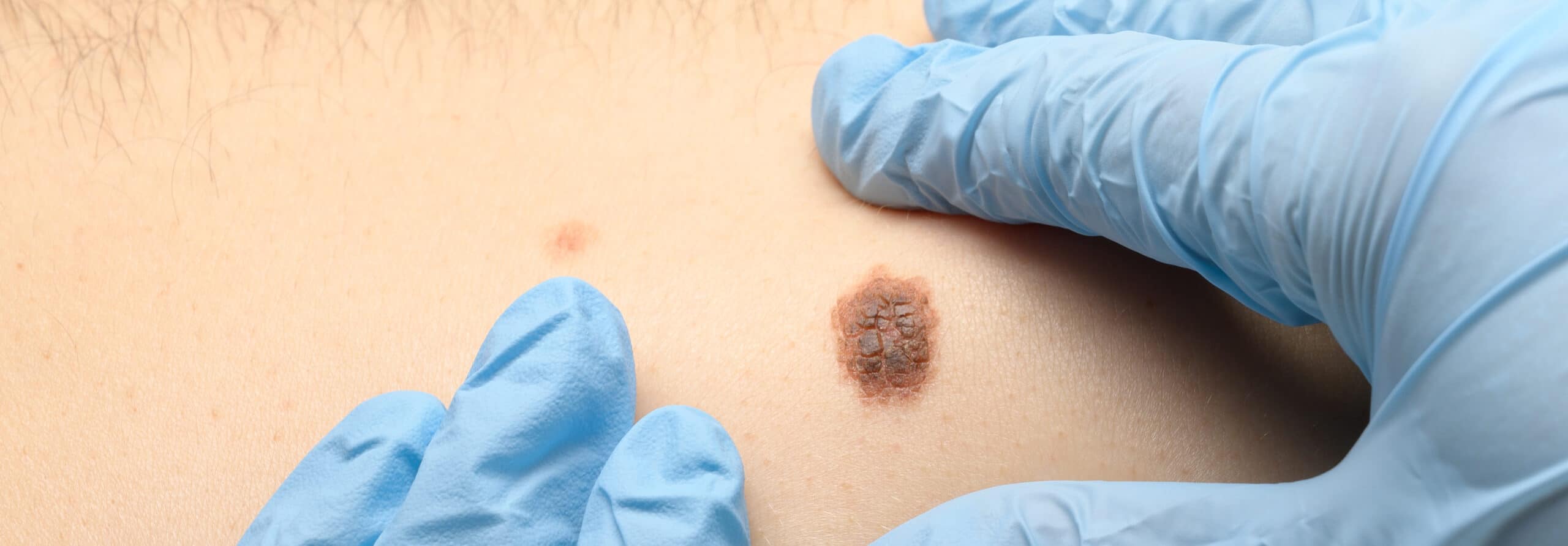MEDICAL DERMATOLOGY
What is Melanoma?
Melanoma is the most serious kind of skin cancer. Melanin is created by cells called melanocytes and gives your skin its particular color. It is in these cells that the condition develops, hence its name. While most common on the skin, melanoma can occur in the eyes or in the nose or throat, though the latter scenarios are quite rare.
Signs and Symptoms of Melanoma
Visible melanomas that appear on the skin are the easiest to spot. Those with darker skin may experience higher rates of hidden melanomas in the nails or under the feet.
Signs of melanoma are:
- Changes in an existing mole
- The appearance of a new growth on your skin
- A mole that bleeds or oozes
- A mole that is tender or itchy
- A mole that is crusty or scaly
Melanoma can involve existing moles but it can also appear on skin with no moles, as well.
What Causes Melanoma?
The skin cells in our bodies typically develop in an orderly fashion. Newer cells push older cells towards the surface of the skin, where they are shed. Cells that have developed DNA damage, however, grow in a far less orderly fashion forming cancerous masses. A combination of environmental and genetic triggers likely cause melanoma. Risk factors for the disease include fair skin, excess exposure to UV light, having many moles or a history of melanoma and a weakened immune system.
How Melanoma is Treated?
Melanoma treatment can vary, depending on what stage the melanoma is in. Early-stage melanomas are often treated with surgery to remove the growth. When melanomas are very thin, they can be removed during biopsy.
If melanoma has spread to other areas of the body, treatment can include:
- Surgery
- Immunotherapy
- Targeted drug treatments
- Radiation therapy
- Chemotherapy
Any treatment for melanoma will be done in careful consultation with your doctor and address the particular needs of your case.
Frequently Asked Questions (FAQ)
How Do You Get Melanoma?
There are a few different ways that someone can develop melanoma. The most common cause is exposure to ultraviolet (UV) radiation from the sun or tanning beds. People with fair skin are at a higher risk for developing melanoma, as they have less pigment in their skin to protect them from the UV rays. Other risk factors for melanoma include a family history of the disease, having a large number of moles on the body, and certain medical conditions that weaken the immune system.
Is Melanoma Genetic/Hereditary?
There is some evidence to suggest that melanoma can be genetic. If you have a family member who has had melanoma, you may be at a higher risk for developing the disease yourself. However, it is important to remember that most people with melanoma do not have any family history of the disease.
How Long Can You Have Melanoma And Not Know It?
This is a difficult question to answer, as it varies from person to person. Some people may have melanoma for years before it is diagnosed, while others may only have the disease for a short time before they notice symptoms. If you are concerned that you may have melanoma, it is important to see a doctor right away.
How Is Melanoma Diagnosed?
If you have symptoms that suggest you may have melanoma, your doctor will likely order a biopsy. This is a simple procedure in which a small sample of tissue is removed from the suspicious area and examined under a microscope. If the biopsy reveals cancer cells, further testing will be done to determine the stage of the disease.
How Fast Does Melanoma Spread?
Again, this varies from person to person. In some cases, melanoma can spread very quickly, while in others it may grow slowly over many years. It is important to remember that melanoma can spread to other parts of the body even if it seems to be localized in one area.
Can Melanoma Kill You?
Yes, melanoma can be deadly if it is not caught early and treated. Melanoma that has spread to other parts of the body is very difficult to treat and often fatal. However, if melanoma is caught in its early stages, it is highly treatable and the chances of a full recovery are excellent.
What are the Stages of Melanoma?
There are four stages of melanoma:
- Stage 0: The cancer is confined to the top layer of skin (the epidermis).
- Stage I: The cancer has spread to the second layer of skin (the dermis).
- Stage II: The cancer has spread to nearby lymph nodes.
- Stage III: The cancer has spread to other parts of the body.


